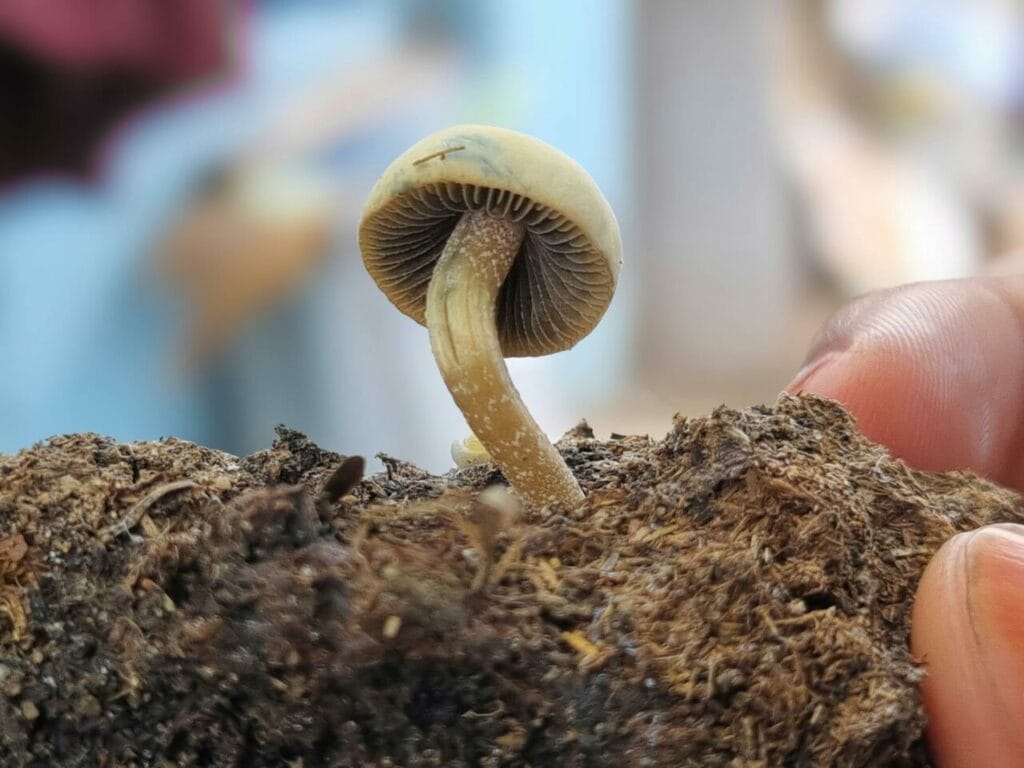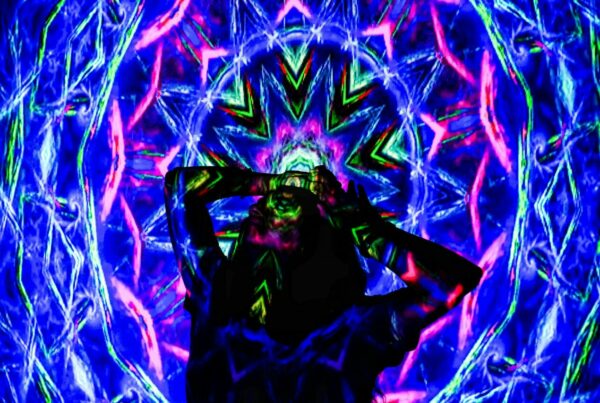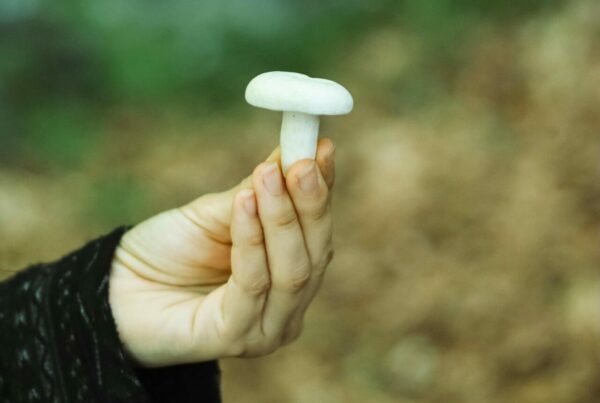As more athletes encounter life-altering injuries, there is a growing interest in exploring unconventional methods of healing and recovery.
Among these unconventional methods, psychedelics, such as magic mushrooms, are increasingly preferred by athletes seeking relief and rehabilitation. This development signifies a changing attitude in the sports community towards alternative therapies, as athletes search for innovative solutions to their physical and psychological challenges.
Many athletes admit to using magic mushrooms outside a clinical setting, suggesting that they likely purchased them from a magic mushroom dispensary. The consumption of these mushrooms has had a noteworthy impact on their mental health and other related issues.
[toc]Key Highlights:
- Athletes experience mental health challenges at rates equal to, and sometimes greater than, the general population.
- Psychedelics may promote neuron growth, potentially offering therapeutic advantages for people recovering from traumatic brain injuries.
- The primary advantage of psychedelics is their potential to positively influence mental health, assisting athletes coping with the aftermath of injuries or high levels of stress.

Athletes’ Experiences as Detailed in a CNN Article
An article on the CNN website by Amy Woodyatt, with contributions from George Ramsay, explores the use of psychedelics by athletes to manage severe sports injuries.
Daniel Carillo, a former Canadian ice hockey player, relayed a particularly compelling story. His challenges encompassed seven diagnosed concussions leading to dementia-like symptoms, depression, anxiety, suicidal tendencies, and chronic headaches. These problems became so intense that even straightforward family outings turned into daunting tasks.
Carillo stumbled upon a psilocybin study conducted by the Imperial College of London while exploring medical literature. Instead of participating in a clinical trial, Carillo opted to take a substantial dose in a more relaxed environment.
In a discussion with CNN, he revealed his routine of regularly microdosing psilocybin, with occasional consumption of larger quantities. Moreover, he a proactive approach to his health, regularly undergoing brain scans and blood tests.
He also emphases the importance of consistent physical exercise, sufficient sleep, a balanced intake of sugar and alcohol, and exposure to sunlight in maintaining his energy and vitality.
Athletes’ Attraction to Psychedelics
Carillo is not the only athlete who has sought the aid of psychedelics to overcome life’s challenges. Numerous professional athletes have explored substances ranging from ayahuasca to LSD in their quest to improve overall wellness, with a particular focus on mental health.
According to research conducted by Courtney Walton, an academic fellow in psychology at the Melbourne School of Psychological Sciences, elite athletes experience mental health issues at rates that match or even exceed those of the general population. Psychedelic therapy has shown potential in addressing mental health concerns among athletes, especially those related to common obstacles such as resistance to therapy, identity crises during career transitions and injuries, and coping with interpersonal stress and conflicts.
The role of psychedelics in mental health treatment is pivotal, particularly for athletes. The brain is responsible for numerous vital functions such as organ regulation, thought processing, emotional management, memory retention, speech, and movement coordination. Individuals with compromised mental functionality may experience a drop in their performance and focus.
Focus is critical in sports, and there is a growing interest in how psychedelics could potentially enhance this aspect. In a recent CNN report, NFL quarterback Aaron Rodgers openly discussed his personal experiences with psychedelics. He shared that consuming a brew made from ayahuasca, an Amazonian plant known for its psychoactive properties, had a positive impact on his football performance.
Expert Perspectives
Experts in the field argue that psychedelics have demonstrated effectiveness in treating certain mental health conditions.
Robin Carhart-Harris, a Professor of Neurology and Psychiatry at the University of California, told CNN Sport that the situation becomes intriguing when viewed through the lens of psychological therapy, particularly in the treatment of depression, with a few notable exceptions.
In terms of brain treatment, Carhart-Harris emphasized the current lack of extensive knowledge in the field of psychedelic use for brain injury treatment. Some evidence suggests that psychedelics may encourage
Despite the potential of psychedelics in promoting neuronal growth, there is a dearth of studies investigating their potential benefits in the context of brain injury recovery.
While the potential applications of psychedelics in the realms of mental health and brain injury treatment are being explored, specialists also emphasize the need for caution. Given the potent effects of these substances, there is a risk of inducing psychological disturbances if consumed by individuals in a psychologically unstable state.
Deciphering the Interaction Between Psychedelics and the Brain
The impact of psychedelics can vary depending on the specific substance ingested. For instance, let’s consider magic mushrooms. Health Canada defines these as mushrooms containing hallucinogenic compounds like psilocybin and psilocin, which can cause alterations in perception. These alterations may include visual or auditory hallucinations, altered tactile sensations, emotional shifts, or even physical symptoms such as muscle cramps and changes in heart rate or blood pressure.
It’s not psilocybin that directly produces these effects; instead, after ingestion, it’s metabolized into psilocin, the compound that’s actually responsible for these effects. Psilocin activates serotonin 5-HT2a receptors located on cortical pyramidal cells in the brain.
According to David Nichols, a professor at Purdue University School of Pharmacy who has been researching psychedelics since the 1960s, these cells serve as the primary computational units of the brain, functioning as the main hub for all brain processing. The activation of these receptors by psilocin leads to changes in brain metabolic activity and neuronal connectivity, thereby affecting cognitive function and perception.
When it comes to brain injury treatment, several theories propose the potential benefits of psychedelics. Classic psychedelics interact with serotonin receptors, known to play a role in inflammation control, and can also inhibit cytokine inflammatory cells. This dual action may enhance blood circulation to injury sites and aid tissue repair post-injury. In animal studies, DMT has shown promise in reducing brain damage resulting from artery blockage.
Magic Mushroom Dispensaries: A Gateway to Therapeutic Use of Shrooms
Magic mushroom dispensaries act as a secure and dependable source for those interested in genuine magic mushroom products. These dispensaries assure safe transactions by dispatching goods through reliable carriers like Canada Post.
When perusing an online magic mushroom dispensary, you’ll encounter a broad spectrum of shrooms and psychedelic products. Each item possesses unique characteristics and advantages, providing users with a variety of options to best suit their individual preferences and needs.
| PRODUCT | IDEAL FOR |
| Dried Shrooms | Mushroom enthusiasts who prefer quick, intense experiences |
| Edibles/ Drinks | Individuals seeking to mask certain flavors and prevent nausea during extended trips |
| Capsules | People who want to include shrooms in their health regimen via microdosing |
Final Thoughts
Psychedelics like mushrooms may play a significant role in supporting the mental health of athletes grappling with traumatic injuries and work-related stress. They offer various techniques for managing symptoms, particularly when used in tandem with therapy. This dual approach has shown to yield promising and enduring results, as corroborated by several studies.
Although the medical community has not officially approved psychedelics as a treatment method, experts caution that consuming magic mushrooms necessitates a comprehensive understanding for safe usage.
Commonly Asked Questions
Do athletes consume psychedelics in high or low quantities?
The consumption of psychedelics varies depending on personal needs and choices. CNN interviews have uncovered a spectrum of usage habits: some opt for sporadic high doses, while others prefer low doses to enhance focus or boost overall health.
Carhart-Harris asserts that low doses of psychedelics hold promise in augmenting mindfulness abilities. This can foster deep concentration, facilitating the attainment of a flow state.
Can I acquire magic mushrooms from a medicinal mushroom outlet?
Medicinal mushroom outlets primarily stock a variety of mushrooms, including Reishi, Lion’s Mane, Turkey Tail, and more. For magic mushrooms, you might want to check out a magic mushroom dispensary or a psychedelic dispensary. Be vigilant to avoid unlawful magic mushroom outlets or vendors who falsely promote authentic psychedelics.
Should I combine talk therapy with psychedelic usage?
In clinical studies, researchers coordinate therapy sessions with psychedelic intake. Research suggests that this integrated approach can foster a deeper comprehension of
Helping individuals interpret the insights derived from high-dose mushroom experiences can enrich the psychedelic journey.
Do psychedelics have a part to play in managing injury-related Can psychedelics be used to manage pain?
The application of psychedelics in pain management is an under-researched area. However, Anna Symonds, a former rugby player from the US, has suggested some potential advantages of using cannabis for this purpose.
F. Z. Zia and their team at the National Institutes of Health have conducted research into the possible use of psychedelics for chronic pain treatment. This research indicates that psychedelics could potentially relieve various forms of pain, including headaches, cancer-related pain, phantom limb pain, and neuropathic pain. They propose that psychedelics could serve as “effective adjuncts” in the management of chronic pain and associated conditions like PTSD and major depression.
There is a scarcity of studies on the use of psychedelics for acute pain.
How could athletes incorporate psychedelics into their routines?
Microdosing, which involves regularly taking small amounts, is a unique aspect of psychedelic use. This practice has gained traction among athletes because it offers the therapeutic benefits of psychedelics while minimizing their negative effects. The adoption of this practice could lead to sustainable results, such as enhancing cognitive flexibility, which is vital for effective decision-making, particularly in high-pressure situations.
Primary Reference:
CNN Report: Athletes Turn To Psychedelics For Life-Changing Injuries
Authors:
Amy Woodyatt and George Ramsay
Further Reading:





